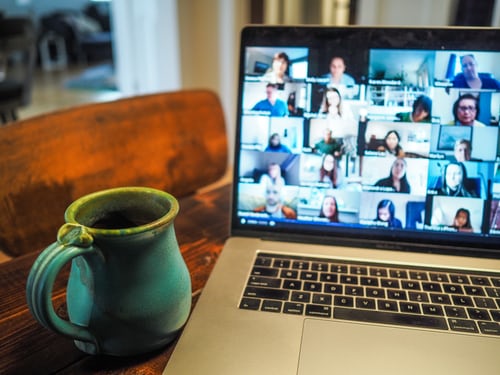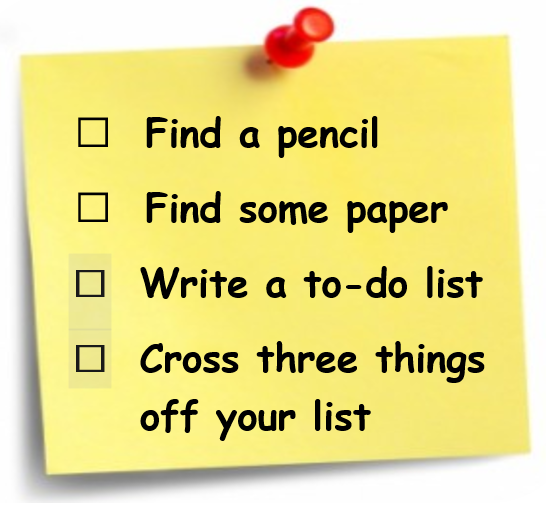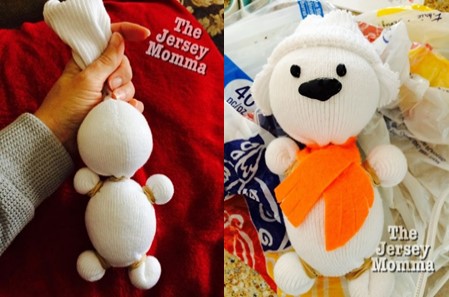Day 365 + ???? (who’s counting) of the pandemic and it seems like everyone is decluttering. We’re all trying to hold true to our reoccurring New Year’s Resolution to ”Get Organized.” Getting Organized can mean different things to us but it usually involves some sorting and culling of categories of stuff.
In our experience, there are always 3 decision buckets your stuff will fall into:
Our NAPO colleague, Barbara Hemphill, coined this brilliant definition: Clutter is Postponed Decisions.™ Clutter builds when we postpone decisions about:
• Do I really love it?
• Will I use it?
• Does it fill a void in my life?
• If I’m keeping it, where should it live?
While you do need to decide about your stuff, you do NOT want to stop the decluttering process to ponder each individual item.
Our time-saving advice is DEFER your decision for the “maybes” and “I don’t knows.”
These tricky decisions deserve attention — but NOT while you’re in the initial stages of rapid-fire, gut reactions to your stuff.
If you stop your intuitive process of deciding Yes, No, Maybe you won’t get through the whole category of stuff and you won’t see visible signs of progress. This will feel depressing and probably halt the whole decluttering process.
Follow our advice and schedule time with yourself — on a separate day — when your mind is fresh and you’ll taste sweet success. Technically, it’s called time chunking. In practice:
• One organizing session is dedicated to quick, visceral decisions.
• Another for contemplative, thoughtful and reasoned thinking.
Permission granted to defer your decisions on all of your “maybes” and “I don’t knows” — not because pushing off until tomorrow is a winning strategy. Permission granted because setting aside the necessary time to consider what deserves a place and space in your life is worthy of your full attention. In this case, deferring the decision is a smart move.
If you only had a few hours to evacuate your home because of an emergency (health- or weather-related), could you determine and locate your essential information, documents and resources?
Hurricanes, wildfires, tornadoes and a global pandemic….to say that 2020 has been a challenging year is an understatement. National Preparedness Month is recognized each September and the theme for 2020 is apropos – “Disasters Don’t Wait. Make Your Plan Today.”
In an emergency, the last thing you should be doing is scurrying to find extra batteries, locating essential documents, and worrying if your insurance is updated. It is critical to have easy access to important documents, records, and resources in the event of an evacuation or emergency.
Thinking through the details and your priorities when you are not in the midst of a crisis is vitally important.
DOCUMENT – the information and resources you already have (for example, your health insurance information, your ‘in case of emergency’ contacts).
Tip: Store your important documents in the Cloud which affords you access no matter where you are. Alternatively, if you plan to keep your documents in a paper-format, store them in one binder/folder and consider laminating.
CONSIDER – the information and resources you may need in an emergency (for example, flood insurance, extra prescription medicine).
Tip: Prepare an emergency kit with the essentials.
ORGANIZE – the information for easy access. Having everything in just a few places, rather than scattered through the house, is a good idea.
Tip: Create a roadmap (in a physical or digital binder) that details where the information and documents are located. My Life Packet is a comprehensive life and legacy affairs organizing workbook that guides you through the process.
SHARE – your plan with your loved ones.
Tip: Establish a family communication plan.
Taking inventory of what you would need in an emergency can save you and your family time, money, and stress. Although it may feel overwhelming, organizing and taking inventory of key information will not only help you ‘weather’ a storm, it will also create peace of mind.
Ah, new relationships! They can be fun and exciting, right? You love being together every day, you fall deep into the honeymoon period, and you feel that your partner is the best thing ever…
Hmm…do you remember mid-March, and a certain technology that blew up? Read the sentence above replacing Zoom with your partner…still works, right!
Yes, Zoom! I remember that gut wrenching feeling of being alone when we first learned that much of the world had shut down. Add living alone to that and it can really throw you for a loop.
My networking group started moving onto the platform that many of us were just starting to learn about. Working through kinks, like Zoom bombers, the leaders of our group helped us navigate through our new normal and suddenly I was with my friends again! It felt SO good!
I was on every day for a while, either networking, with friends, or with family, going to Zoom birthday parties and gathering for Zoom trivia nights. On my birthday in May, my friends threw me a surprise Zoom birthday and more friends appeared flash mob style to one of my favorite songs.
I loved Zoom! I couldn’t get enough of Zoom, until the day came that I could. Just like the honeymoon phase in a relationship, my relationship with Zoom peaked, and I reached the level of Zoom Fatigue, which many of us are facing today.
I just didn’t want to be on it anymore and faced that alone feeling again. I learned to fill my days in different ways, and after a while, as the world was starting to open up a bit, I started new routines with more balance.
Zoom is still a part of my new normal. I became a part of an accountability group with a few friends, go to a few networking meetings a week and even started virtual organizing with clients.
If you are still in the fog of Zoom Fatigue, here are some things to try to make being on it fun again:
So, learn to love Zoom again, but try to keep a life balance, and leave the honeymoon period for people, not the latest tech craze. Wishing you, your family, and your friends, a happy and healthy Fall!

As parents face the annual back to school routine this year, perhaps we need to revise the standard preparation for the first day of school. Rather than discuss how to organize your physical “stuff” for school, we are going to discuss the ABC’s for organizing a plan to address stress during this challenging time.
ASSESS
Many parents experienced the challenge of online learning (aka – distance learning or at-home learning) with their children this spring. As school openings fast approach, it is a good time to stop and assess how that online learning experience went for your family. What worked well? What did not work well? And most importantly, why didn’t it work? The best way to find a solution to a problem is to understand the root cause of the problem. If your child was too distracted or had difficulty paying attention to online sessions, think about why he or she was distracted and do your best to address that distraction. Was their sibling doing their lesson in the same room? Were toys in the room that caught their attention? Was background noise a disturbance? Perhaps switching the room for their online learning or putting away some toys may lessen the distraction. Wearing ear buds might reduce the background noise. There is no one size fits all answer to this issue or any other issue you may have encountered. The key is to figure out why the situation did not work so you can identify a solution that will work for your family. And, for those who have not been through online learning as of yet, reach out to family and friends who have experienced it and get their input on what worked for them to see if it can work for your family.
BALANCE
Dealing with our children can be challenging in general. So, having to deal with online learning or blended learning, in addition to normal daily stresses, can be overwhelming for some. Many parents are also trying to work from home which compounds that stress. Finding balance amidst the chaos may be beneficial. Take time before school begins to identify ways to balance the hectic environment that may exist during the school day. A quick 5 to 10-minute stress-reducing activity should provide relief. The list below is in no way all inclusive.
Also, our children are not immune to the stress that online learning may create. They may find some of the items above useful when they encounter a feeling of anxiety. Here are a few additional suggestions:
Figure out what works best for you and for each of your family members.
COMMUNICATE
Creating a productive environment for both you and your kids is a goal for many parents. Open communication can contribute to that goal. Does your spouse know you have a 10am conference call and he or she needs to handle any issues that may pop up during that call? Does your son have a test tomorrow and needs quiet time to study? Is your daughter struggling with a lesson and needs additional tutoring? Having open discussions about the needs of each family member can go a long way to reducing stress during the day. The discussions don’t need to be formal. While clearing the dinner table ask a question like “Do you need anything from me to prepare for tomorrow?” or “Are you stressing about anything and, if so, how can I help?” Speaking to someone about their needs can help ease their tension. And don’t forget to let your family know of your needs as well. If they don’t ask you what you need, you can bring it up to them. Let them know that you have that conference call at 10am and ask that you not be disturbed for that hour. Remind them that the dog needs to be walked at lunchtime and ask who can help with that task. Communicating effectively will let each family member know you are all there to support each other.
Using the ABC’s above may not eliminate all the stressors you will face this school year. However, utilizing Assess and Communicate as proactive steps to help prevent stress, and incorporating Balance when stressful situations arise, may help you get back on track and allow you to have a productive day.
Karen Kabara
Your Tasks – Our Time, Inc

| Between the ups and downs of the COVID-19 pandemic and the political tension, the past several months have been especially stressful. There are many ways that people handle stress. Some make To-Do lists. |

| For instance, what does one do with old (clean) socks? You know the ones… the dryer has eaten the mate or the elastic has lost its stretch. Below are some ideas of what you can do with socks. Not only can you enjoy some of these projects, beautify your home and/or enlist the aid of any children you may have lounging around the house feeling bored, these projects are a good way to reuse old socks. Thank you to Megan Willett and Business Insider for the post on 61 Things You Can Do With Your Old Mismatched Socks. Two that I found particularly interesting were the No-Sew Sock Puppy and the No-Sew Sock Face Mask. |

| We live in trying times. Even though businesses and restaurants are slowly opening, many people feel quite alone and isolated from the world. Find a phone buddy. Make yourself a To-Do list and share it with your phone buddy. Did you check off at least one thing on the list? Fabulous! Share it with your phone buddy. If that person is not available, tell your cat or your dog or look in the mirror and tell yourself. Celebrate your accomplishments. |

| When you have taken time to decompress and replenish your spirit, learn about the multiple ways that we can all work for social justice and change in our world. But, most importantly, be gentle with yourself. Stay well, stay safe and stay home if you are able… and, if you are one of the many who must go to work to or who chooses to volunteer to keep us safe, healthy, fed, informed or otherwise (relatively) sane, thank you. |
Wishing is a good thing! It creates a vision of what we’d like for the future. Often the vision motivates us into action to make it come true. But the tricky part about a wish, compared to a goal, is sometimes we want our wish to magically happen without our taking action. Can you relate?
Here are some examples of Wishful Thinking that might be contributing to the clutter in your home:
The clothes you wish you could get into two or three sizes down.
The workout equipment you wish you would use.
The craft projects you wish you’d have to time to work on.
The second home you wish you could buy.
Charitable shops have been closed for some time due to the pandemic, and now that they’re opened, they are inundated with goods. Some people are reluctant to donate to charities for fear their items will be thrown in the trash. I’ve been told by Goodwill workers that they are storing items in trailers, however that statement is unverified. Another option for items you wish to sell or give away for free are websites like Freecycle.org and CraigsList.com, or local pages on Facebook Marketplace. Since summer is here, you can find ways exchange items with social distancing.
Wishful Thinking can be shifted to Realistic Thinking. If you have trouble getting started, consider the help of a professional organizer. Many are doing virtual organizing and can help you shift your thinking so letting go is easier. YOUR WISH FOR A CLUTTER-FREE HOME CAN COME TRUE!
